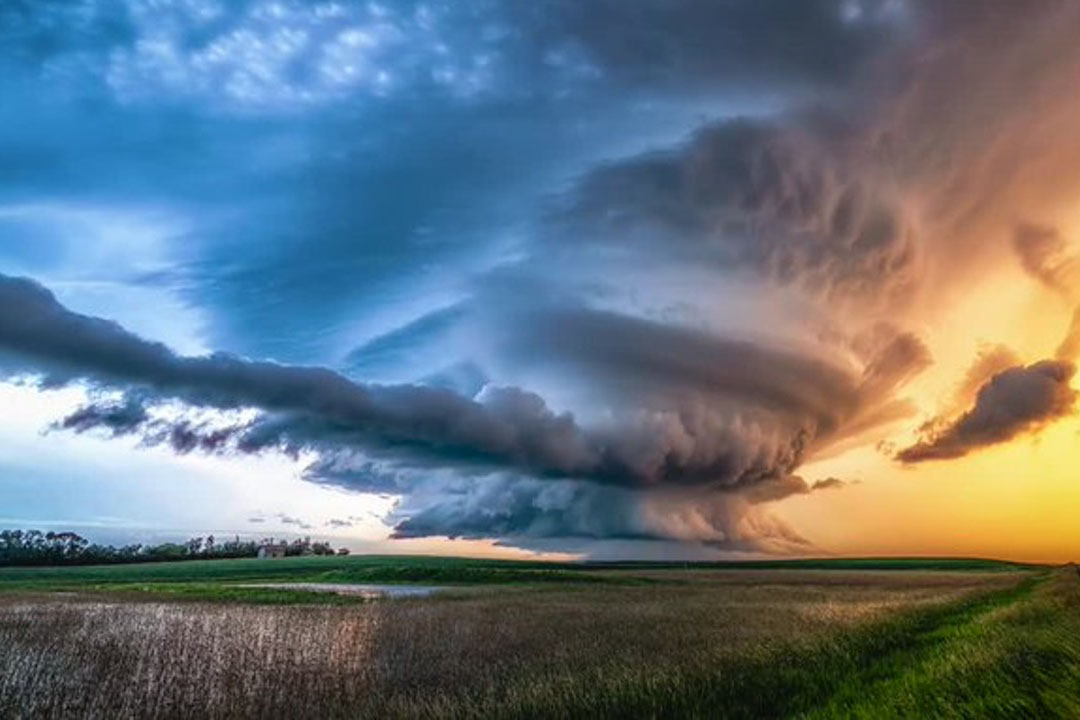
USask researcher investigates Prairie superstorms
Scientists are long past the point of debating whether climate change is happening—the latest Intergovernmental Panel on Climate Change (IPCC) report was crystal clear: to keep the 1.5°C limit increase agreed to in Paris within reach, humanity needs to cut global emissions by 45 per cent this decade or face horrific consequences.
By Megan EvansIn Saskatchewan and on the Canadian Prairies, the call to action is even more critical: according to Environment and Climate Change Canada, the country is warming two to three times the global average.
A 2019 federal government climate report warns that changes are already evident in many parts of the country and are projected to intensify. University of Saskatchewan (USask) School of Environment and Sustainability (SENS) PhD student Mostofa Kamal is studying supercell thunderstorms and the threshold factors that can predict the severity of storms—critical in a region that is susceptible to these types of volatile storms, which are increasing in frequency and severity.
“Canada is ranked second in terms of highest tornado frequency, and 75 per cent of Canadian tornadoes are triggered by supercell thunderstorms,” Kamal said. “Supercells are considered the most violent thunderstorm with a rotating vertical cloud structure and getting caught in a storm can be intense and scary. Even if there is no hail, heavy rain can severely reduce visibility and flood roads. It’s no wonder we get scared when we hear the possibility of severe thunderstorms with golf ball-sized hail that can wreak havoc on cars and other property.”
Despite the enormous socioeconomic impact, it remains poorly understood to what extent the vertical wind shear, lifting mechanism, moisture availability, and convective available potential energy control which aspects of supercell characteristics over the Canadian Prairies, and how future climate change would affect these environmental factors.
High precipitation supercells result in massive economic losses through catastrophic flooding, severe hail, and damaging winds. The low precipitation supercells often produce damaging straight-line winds (wind gust speed of 90 km/h or greater) and severe hail (more than 20 mm), which causes significant crop damage across the Prairies. Classic supercell thunderstorms account for a significant percentage of tornadoes over the Canadian Prairies.
“My research findings will help actuarial science researchers assess severe thunderstorm-related events (hailstorms, wind damage, flash flood) risk assessment for properties, crop damage, and crop yields,” said Kamal. “My research will also help rural and urban planners and civil engineering researchers design and plan climate-smart infrastructure that can withstand extreme precipitation results from HP supercell thunderstorms, allowing for better-informed decision making in the face of a changing climate.
“The main goal is to identify the meteorological conditions which favour the development and maintenance of different supercell storms over the Canadian Prairies.”
Kamal was born in Bangladesh and moved to Canada to pursue additional education and career opportunities. As the world prepares to celebrate Earth Day on April 22, Kamal is committed to research to help understand climate change connections to deadly supercell thunderstorms.
“On April 26, 1989, a supercell thunderstorm in Bangladesh produced the deadliest tornado in the world’s recorded history—it killed 1,300 people and injured an additional 12,000—so I am motivated to study this phenomenon that affects the place I come from, and also where I live now.”

